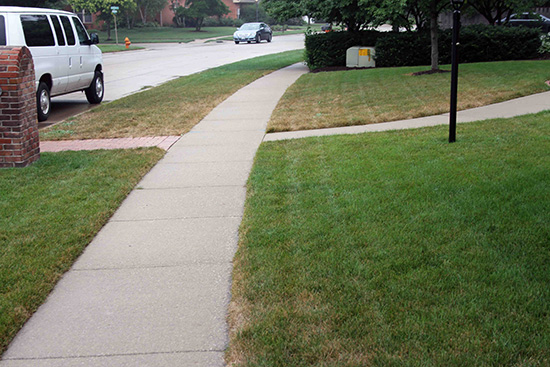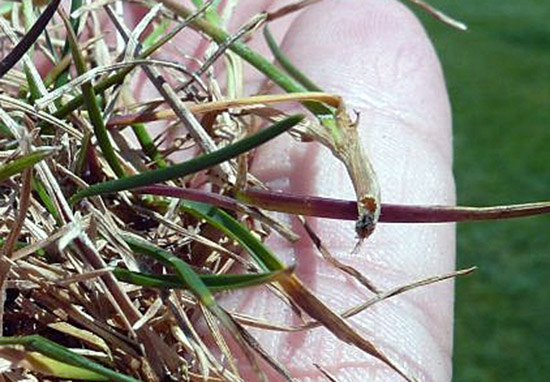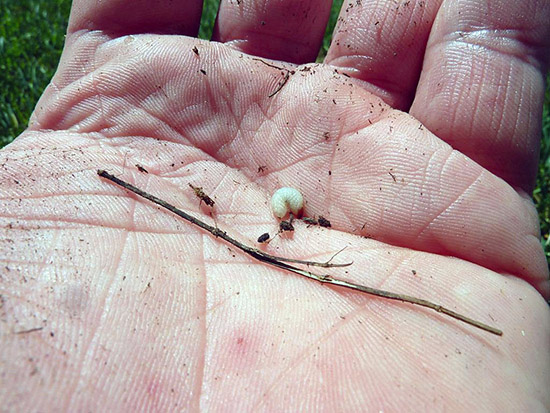Issue 11, July 11, 2016
Billbug
Bluegrass billbugs have been reported as numerous in northeastern Illinois. Bluegrass billbug occurs throughout the state, with hunting billbug being present in southern Illinois on zoysia and bermudagrass.
Billbug larvae are white, stocky, legless larvae that feed on the roots of turf. Fully grown ones are about 1/2 inch long. Damaged turf will be brown, and typically the damage appears in a circular or ovate pattern, with nearby turf unaffected. If tugged, individual stems or grass plants pull out easily. The bases of these will have been raggedly chewed off. Sawdust-like frass from the grubs will be seen on and in the thatch.

Billbug damage pattern in bluegrass.
Adult billbugs are cylindrical, 3/8-inch-long, hard-shelled, blackish beetles with elongated snouts like elephants. These beetles are generally flightless, so they have to walk everywhere. This lack of long-distance movement usually confines damaged areas somewhat. Because adults are very long-lived, they may be found at any time of year, walking through the grass or along the edge of sidewalks; grubs in all sizes also are found throughout the year. The adult has a tiny mandible (jaw) at the end of the "snout" that it uses to chew a hole in the stem of a grass plant. It then turns around and lays an egg in that hole.

Billbug larval damage to bluegrass.
The resulting larva tunnels down through the stem of the grass plant and continues through the rhizome until it gets too big to fit inside the stem. It then emerges into the soil to feed on the grass roots, as do other white grubs. Although larvae can be found at any time of the year in all sizes, they are most numerous at this time of year, making it an ideal time to apply controls. The damage threshold for billbugs is similar to that for grubs. Expect damage at 10 or more per square foot.

Billbug scouting.
Control is the same as addressed in the white grub article. Trichlorfon (Dylox) is also effective at this time on larvae that have emerged from the stems to feed on the roots. Insecticidal nematodes, particularly Heterorhabditis bacteriophora, also provide control. Insecticidal nematodes typically provide about 60% control, whereas chemical insecticides should provide about 95% control. (Phil Nixon)
Author:
Phil Nixon